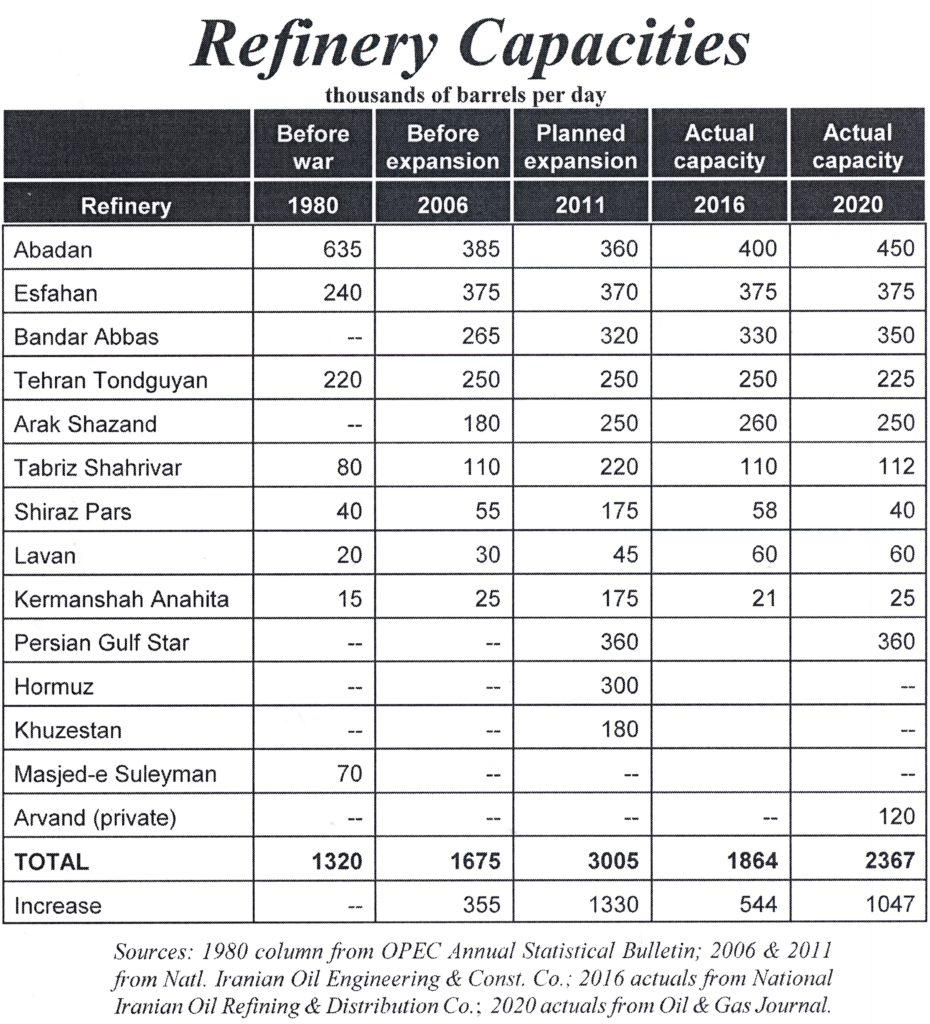October 08, 2021
 The five-year expansion program for Iran’s refineries, announced in 2006, is only 52 percent complete after 15 years.
The five-year expansion program for Iran’s refineries, announced in 2006, is only 52 percent complete after 15 years.
The country unveiled the refinery expansion program when Republican congressmen in the US discovered Iran’s dependency on gasoline imports and started to design programs to block those imports and feed public anger with the regime.
The regime has boasted about its great success in expanding Iran’s refineries and making the country independent of any gasoline imports. And, indeed, the country is no longer a gasoline importer, but is now a gasoline exporter. In fact, gasoline exports are now one of the country’s major money earners.
This is primarily due to the completion of the new Persian Gulf Star Refinery, the country’s third largest refinery (after Abadan and Esfahan) with an output of 360,000 barrels a day.
But that new refinery is one of the few bright spots in the expansion program.
In 2006, the government announced plans to boost refinery capacity from 1,675,000 barrels per day to 3,005,000 by 2011. By 2020, however, the refinery capacity was just 2,367,000 or 52 percent of what it should have been back in 2011.
In many cases, the announced plans came to naught. The small Kermanshah refinery was planned for a huge six-fold expansion from 25,000 barrels a day to 175,000. Today, its capacity in still 25,000.
The Shiraz refinery was to go from 55,000 barrels a day in 2006 to 175,000 in 2011. Today, its capacity is down to 40,000, not an expansion at all.
The Tabriz refinery was supposed to double its capacity from 110,000 to 220,000. Instead, it is at 112,000 today.
There were other success stories, however. The Abadan refinery, once the world’s largest but badly battered in the Iran-Iraq war, was not targeted for any expansion at first, but has now gone from 385,000 barrels a day to 450,000. And the Bandar Abbas refinery was originally programmed to expand from 265,000 in 2006 to 320,000 in 2011 but in 2020 had actually reached 350,000.
Still, the goal of 3,005,000 in 2011 is nowhere in sight as total refinery capacity today is 2,367,000 barrels or 21 percent below the planned total for 2011, a decade ago.
And new Oil Minister Javad Oji announced September 10 that he plans to boost capacity to 3,500,000 within four to five years even while the 2006 plan remains unfulfilled.

















